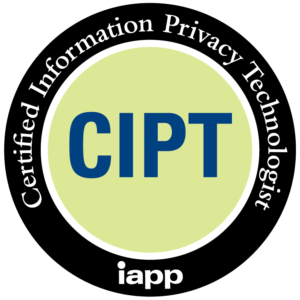(26) Ba cheart feidhm a bheith ag prionsabail na cosanta sonraí maidir le haon fhaisnéis a bhaineann le duine nádúrtha sainaitheanta nó in-sainaitheanta. Sonraí pearsanta ar cuireadh ainm bréige i bhfeidhm orthu agus a d'fhéadfaí a chur i leith duine nádúrtha trí fhaisnéis bhreise a úsáid, ba cheart a mheas gur faisnéis faoi dhuine nádúrtha in-sainaitheanta na sonraí sin. Chun a chinneadh an bhfuil duine nádúrtha in-sainaitheanta nó nach bhfuil, ba cheart aird a thabhairt ar na modhanna go léir, amhail díriú ar leith, is dócha, le réasún, a úsáidfidh an rialaitheoir nó duine eile chun an duine nádúrtha a shainaithint go díreach nó go hindíreach. Lena fháil amach an bhfuil sé réasúnta dóchúil go mbainfear úsáid as bealaí chun an duine nádúrtha a shainaithint, ba cheart aird a thabhairt ar fhachtóirí oibiachtúla uile, amhail na costais a ghearrfar agus an t-achar ama is gá le haghaidh sainaitheanta, agus an teicneolaíocht a bheidh ar fáil tráth na próiseála agus forbairtí teicneolaíocha á gcur san áireamh. Níor cheart, dá bhrí sin, feidhm a bheith ag prionsabail na cosanta sonraí maidir le faisnéis anaithnid, eadhon faisnéis nach mbaineann le duine nádúrtha sainaitheanta nó in-sainaitheanta nó le sonraí persanta atá anaithnid ar bhealach agus nach bhfuil an t-ábhar sonraí in-sainaitheanta nó nach bhfuil an duine sin in-sainaitheanta a thuilleadh. Dá bhrí sin, ní bhaineann an Rialachán seo leis an bpróiseáil a dhéantar ar fhaisnéis anaithnid den sórt sin, lena n-áirítear chun críoch staidrimh agus taighde.
(26) The principles of data protection should apply to any information concerning an identified or identifiable natural person. Personal data which have undergone pseudonymisation, which could be attributed to a natural person by the use of additional information should be considered to be information on an identifiable natural person. To determine whether a natural person is identifiable, account should be taken of all the means reasonably likely to be used, such as singling out, either by the controller or by another person to identify the natural person directly or indirectly. To ascertain whether means are reasonably likely to be used to identify the natural person, account should be taken of all objective factors, such as the costs of and the amount of time required for identification, taking into consideration the available technology at the time of the processing and technological developments. The principles of data protection should therefore not apply to anonymous information, namely information which does not relate to an identified or identifiable natural person or to personal data rendered anonymous in such a manner that the data subject is not or no longer identifiable. This Regulation does not therefore concern the processing of such anonymous information, including for statistical or research purposes.
(27) Níl feidhm ag an Rialachán seo maidir le sonraí pearsanta daoine éagtha. Féadfaidh na Ballstáit foráil a dhéanamh do rialacha i dtaca le próiseáil sonraí pearsanta daoine éagtha.
(27) This Regulation does not apply to the personal data of deceased persons. Member States may provide for rules regarding the processing of personal data of deceased persons.
(28) Is féidir, trí ainm bréige a chur i bhfeidhm ar na sonraí pearsanta, na rioscaí a laghdú do na hábhair sonraí lena mbaineann agus cuidiú le rialaitheoirí agus próiseálaithe a gcuid oibleagáidí cosanta sonraí a chomhlíonadh. Ní bheartaítear, le “ainm bréige a chur i bhfeidhm” a thabhairt isteach go sainráite sa Rialachán seo bac a chur ar aon bhearta eile cosanta sonraí.
(28) The application of pseudonymisation to personal data can reduce the risks to the data subjects concerned and help controllers and processors to meet their data-protection obligations. The explicit introduction of ‘pseudonymisation’ in this Regulation is not intended to preclude any other measures of data protection.
(29) Chun go gcruthófar dreasachtaí do chur i bhfeidhm ainm bhréige tráth a ndéantar sonraí pearsanta a phróiseáil, ba cheart deis a bheith ag an rialaitheoir céanna bearta le haghaidh ainm bréige a chur i bhfeidhm, cé go gceadaítear anailís ghinearálta ag an am céanna, má tá bearta teicniúla agus eagraíochtúla glactha ag an rialaitheoir sin ar gá iad chun a áirithiú, don phróiseáil lena mbaineann, go gcuirtear an Rialachán seo chun feidhme, agus a áirithiú go gcoimeádtar i leataobh faisnéis bhreise le haghaidh na sonraí pearsanta a shannadh d' ábhar sonraí ar leith. Ba cheart don rialaitheoir a phróiseálann na sonraí pearsanta na daoine údaraithe ar de chuid an rialaitheora chéanna iad a lua.
(29) In order to create incentives to apply pseudonymisation when processing personal data, measures of pseudonymisation should, whilst allowing general analysis, be possible within the same controller when that controller has taken technical and organisational measures necessary to ensure, for the processing concerned, that this Regulation is implemented, and that additional information for attributing the personal data to a specific data subject is kept separately. The controller processing the personal data should indicate the authorised persons within the same controller.
(30) Féadfar daoine nádúrtha a chomhcheangal le sainaitheantóirí ar líne a sholáthraítear lena gcuid gléasanna, feidhmchlár, uirlisí agus prótacal, amhail seoltaí prótacail idirlín, aitheantóirí fianán nó aitheantóirí eile amhail clibeanna aitheantais radaimhinicíochta. D'fhéadfadh sé go bhfágfaí loirg leis an méid sin a d'fhéadfaí a úsáid chun próifílí de na daoine nádúrtha a chruthú agus chun iad a shainaithint, go háirithe tráth a gcuirfí i gcomhcheangal le sainaitheantóirí uathúla iad agus le faisnéis eile a fhaigheann na freastalaithe.
(30) Natural persons may be associated with online identifiers provided by their devices, applications, tools and protocols, such as internet protocol addresses, cookie identifiers or other identifiers such as radio frequency identification tags. This may leave traces which, in particular when combined with unique identifiers and other information received by the servers, may be used to create profiles of the natural persons and identify them.
(31) Údaráis phoiblí a nochtar sonraí pearsanta dóibh i gcomhréir le hoibleagáid dhlíthiúil maidir le feidhmiú a misin oifigiúil, amhail údaráis chustaim agus chánach, aonaid imscrúdúcháin airgeadais, údaráis neamhspleácha riaracháin, nó údaráis de chuid an mhargaidh airgeadais atá freagrach as rialáil agus as maoirseacht a dhéanamh ar mhargaí urrús, níor cheart a mheas gur faighteoirí iad má fhaigheann siad sonraí pearsanta a theastaíonn chun fiosrúchán ar leith a dhéanamh ar mhaithe leis an leas ginearálta, i gcomhréir le dlí an Aontais nó le dlí Ballstáit. Aon iarrataí a sheolfaidh údaráis phoiblí, ba cheart iad a bheith i gcónaí i scríbhinn, réasúnaithe agus ócáideach i gcónaí agus níor cheart córas comhdúcháin ina iomláine a bheith i gceist leo ná níor cheart idirnascadh córas comhdúcháin a bheith mar thoradh orthu. An phróiseáil a dhéanann na húdaráis phoiblí sin ar shonraí pearsanta, ba cheart di na rialacha cosanta sonraí is infheidhme de réir chríocha na próiseála a chomhlíonadh.
(31) Public authorities to which personal data are disclosed in accordance with a legal obligation for the exercise of their official mission, such as tax and customs authorities, financial investigation units, independent administrative authorities, or financial market authorities responsible for the regulation and supervision of securities markets should not be regarded as recipients if they receive personal data which are necessary to carry out a particular inquiry in the general interest, in accordance with Union or Member State law. The requests for disclosure sent by the public authorities should always be in writing, reasoned and occasional and should not concern the entirety of a filing system or lead to the interconnection of filing systems. The processing of personal data by those public authorities should comply with the applicable data-protection rules according to the purposes of the processing.
(32) Ba cheart toiliú a thabhairt trí ghníomh soiléir dearfach lena mbunaítear cur in iúl a thugann a t-ábhar sonraí faoi shaoirse agus atá sonrach, feasach agus gan athbhrí á rá go n-aontaíonn an t-ábhar sonraí le sonraí pearsanta a bhaineann leis nó léi a phróiseáil, amhail trí ráiteas scríofa, lena n-áirítear trí mheán leictreonach, nó ráiteas ó bhéal. D'fhéadfaí go n-áireofaí air sin tic a chur i mbosca nuair a thugtar cuairt ar shuíomh gréasáin idirlín, socruithe teicniúla a roghnú do sheirbhísí na sochaí faisnéise nó trí ráiteas nó iompar eile lena gcuirtear in iúl go soiléir sa chomhthéacs sin go dtoilíonn an t-ábhar sonraí leis an bpróiseáil atá beartaithe a dhéanamh ar a shonraí pearsanta nó ar a sonraí pearsanta. Dá bhrí sin, níor cheart gurbh ionann agus toiliú iad tost, boscaí ar cuireadh tic leo roimh ré nó neamhghníomhaíocht. Ba cheart don toiliú gach gníomhaíocht próiseála arna déanamh chun na críche céanna nó chun na gcríoch céanna a chumhdach. I gcás ina bhfuil an iliomad críoch leis an bpróiseáil, ba cheart toiliú a thabhairt dóibh uile. Má tá an t-ábhar sonraí le toiliú leis an bpróiseáil tar éis iarraidh trí mheán leictreonach a fháil chuige sin, ní mór don iarraidh sin a bheith soiléir achomair agus níor cheart di cur isteach barraíocht ar úsáid na seirbhíse ar ina leith a tugadh an toiliú.
(32) Consent should be given by a clear affirmative act establishing a freely given, specific, informed and unambiguous indication of the data subject's agreement to the processing of personal data relating to him or her, such as by a written statement, including by electronic means, or an oral statement. This could include ticking a box when visiting an internet website, choosing technical settings for information society services or another statement or conduct which clearly indicates in this context the data subject's acceptance of the proposed processing of his or her personal data. Silence, pre-ticked boxes or inactivity should not therefore constitute consent. Consent should cover all processing activities carried out for the same purpose or purposes. When the processing has multiple purposes, consent should be given for all of them. If the data subject's consent is to be given following a request by electronic means, the request must be clear, concise and not unnecessarily disruptive to the use of the service for which it is provided.
(33) Is minic nach féidir críoch próiseála sonraí pearsanta chun críocha an taighde eolaíoch a shainaithint go hiomlán tráth bhailiú na sonraí. Dá bhrí sin, ba cheart a cheadú do na hábhair sonraí a dtoiliú a thabhairt maidir le réimsí áirithe den taighde eolaíoch i gcomhréir le caighdeáin eiticiúla aitheanta i ndáil leis an taighde eolaíoch. Ba cheart an deis a bheith ag na hábhair sonraí gan a dtoiliú a thabhairt ach do réimsí áirithe taighde nó do chodanna de thionscadail taighde, a mhéid a cheadaítear sin leis an gcríoch a beartaíodh.
(33) It is often not possible to fully identify the purpose of personal data processing for scientific research purposes at the time of data collection. Therefore, data subjects should be allowed to give their consent to certain areas of scientific research when in keeping with recognised ethical standards for scientific research. Data subjects should have the opportunity to give their consent only to certain areas of research or parts of research projects to the extent allowed by the intended purpose.
(34) Ba cheart sonraí géiniteacha a shainmhíniú mar shonraí pearsanta a bhaineann le tréithe géiniteacha duine nádúrtha a fuarthas le hoidhreacht nó a fuarthas mar thoradh ar anailís a rinneadh ar shampla bitheolaíoch a tógadh ón duine nádúrtha atá i gceist, go háirithe anailís chrómasómach, anailís ar aigéad dí-ocsairibeanúicléasach (ADN) nó anailís ar aigéad ribeanúicléasach (RNA), nó mar thoradh ar an anailís ar aon ghné eile lena bhféadfar faisnéis choibhéiseach a fháil.
(34) Genetic data should be defined as personal data relating to the inherited or acquired genetic characteristics of a natural person which result from the analysis of a biological sample from the natural person in question, in particular chromosomal, deoxyribonucleic acid (DNA) or ribonucleic acid (RNA) analysis, or from the analysis of another element enabling equivalent information to be obtained.
(35) Ba cheart a áireamh ar shonraí pearsanta a bhaineann leis an tsláinte na sonraí uile i ndáil le stádas sláinte ábhair sonraí, ar sonraí iad lena nochtar faisnéis a bhaineann le stádas sláinte coirp nó meabhrach an duine is ábhar de na sonraí, mar atá ag an am, mar a bhí nó mar a bheidh. Áirítear ar an méid sin faisnéis faoin duine nádúrtha a bailíodh le linn an chláraithe le haghaidh seirbhísí cúraim sláinte nó le linn sholáthar na seirbhísí sin amhail dá dtagraítear i dTreoir 2011/24/AE ó Pharlaimint na hEorpa agus ón gComhairle (9) don duine nádúrtha sin; uimhir, siombal nó mír eolais a shanntar do dhuine nádúrtha le go ndéanfar an duine nádúrtha a shainaithint go huathúil chun críocha sláinte; faisnéis a fhaightear de bharr tástáil nó scrúdú a dhéanamh ar chuid den chorp nó ar shubstaint de chuid an choirp, lena n-áirítear de bharr sonraí géiniteacha agus samplaí bitheolaíocha; agus aon fhaisnéis faoi ghalar, mar shampla, nó faoi mhíchumas, baol galair, stair liachta, cóir chliniciúil, nó staid fhiseolaíoch nó bhithleighis an ábhair sonraí, beag beann ar an bhfoinse as a dtagann sí, mar shampla ó dhochtúir nó ó ghairmí cúram sláinte eile, ó ospidéal, ó fheiste míochaine nó ó thástáil in vitro diagnóiseach.
(35) Personal data concerning health should include all data pertaining to the health status of a data subject which reveal information relating to the past, current or future physical or mental health status of the data subject. This includes information about the natural person collected in the course of the registration for, or the provision of, health care services as referred to in Directive 2011/24/EU of the European Parliament and of the Council [9] to that natural person; a number, symbol or particular assigned to a natural person to uniquely identify the natural person for health purposes; information derived from the testing or examination of a body part or bodily substance, including from genetic data and biological samples; and any information on, for example, a disease, disability, disease risk, medical history, clinical treatment or the physiological or biomedical state of the data subject independent of its source, for example from a physician or other health professional, a hospital, a medical device or an in vitro diagnostic test.
(36) Ba cheart gurb é an áit a bhfuil a riarachán lárnach san Aontas ag rialaitheoir príomhbhunaíocht an rialaitheora san Aontas, murar i mbunaíocht eile de chuid an rialaitheora san Aontas a ghlactar na cinntí maidir le críocha agus modhanna phróiseáil na sonraí pearsanta, agus sa chás sin ba cheart an bhunaíocht eile sin a mheas mar an phríomhbhunaíocht. Ba cheart príomhbhunaíocht de chuid rialaitheora san Aontas a chinneadh de réir critéir oibiachtúla agus, tríd an gcinneadh sin, ba cheart a thabhairt le tuiscint gur inti a dhéantar feidhmiú éifeachtach agus iarbhír na ngníomhaíochtaí bainistíochta lena ndéantar na príomhchinntí maidir le críocha agus modhanna na próiseála trí shocruithe cobhsaí. Níor cheart don chritéar sin a bheith ag brath ar cibé an ndéantar an phróiseáil ar shonraí pearsanta ag an áit sin. Má tá modhanna teicniúla agus teicneolaíochtaí ann agus in úsáid chun sonraí pearsanta a phróiseáil nó chun gníomhaíochtaí próiseála a dhéanamh, ní hionann sin is a rá gur príomhbhunaíocht an áit sin agus, dá bhrí sin, ní critéir chinntitheacha iad sin maidir le príomhbhunaíocht. Ba cheart an áit ina bhfuil a riarachán lárnach san Aontas príomhbhunaíocht an phróiseálaí nó, mura bhfuil aon riarachán lárnach aige san Aontas, ba cheart gurbh í an áit ina ndéantar na príomhghníomhaíochtaí próiseála san Aontas. I gcásanna a bhaineann leis an rialaitheoir agus leis an bpróiseálaí araon, ba cheart gurb é an príomhúdarás inniúil maoirseachta i gcónaí údarás maoirseachta an Bhallstáit ina bhfuil a phríomhbhunaíocht ag an rialaitheoir, ach ba cheart údarás maoirseachta an phróiseálaí a mheas mar údarás maoirseachta lena mbaineann agus ba cheart don údarás maoirseachta sin a bheith rannpháirteach sa nós imeachta comhair dá bhforáiltear sa Rialachán seo. In aon chás, níor cheart údaráis mhaoirseachta an Bhallstáit nó na mBallstát ina bhfuil bunaíocht amháin nó níos mó ag an bpróiseálaí a mheas mar na húdaráis mhaoirseachta lena mbaineann. I gcás inar leis an rialaitheoir amháin a bhaineann an dréachtchinneadh. I gcás ina ndéanann grúpa gnóthas an phróiseáil, ba cheart príomhbhunaíocht an ghnóthais rialaithigh a mheas mar phríomhbhunaíocht an ghrúpa gnóthas, seachas i gcás ina gcinneann gnóthas eile na críocha agus na modhanna próiseála.
(36) The main establishment of a controller in the Union should be the place of its central administration in the Union, unless the decisions on the purposes and means of the processing of personal data are taken in another establishment of the controller in the Union, in which case that other establishment should be considered to be the main establishment. The main establishment of a controller in the Union should be determined according to objective criteria and should imply the effective and real exercise of management activities determining the main decisions as to the purposes and means of processing through stable arrangements. That criterion should not depend on whether the processing of personal data is carried out at that location. The presence and use of technical means and technologies for processing personal data or processing activities do not, in themselves, constitute a main establishment and are therefore not determining criteria for a main establishment. The main establishment of the processor should be the place of its central administration in the Union or, if it has no central administration in the Union, the place where the main processing activities take place in the Union. In cases involving both the controller and the processor, the competent lead supervisory authority should remain the supervisory authority of the Member State where the controller has its main establishment, but the supervisory authority of the processor should be considered to be a supervisory authority concerned and that supervisory authority should participate in the cooperation procedure provided for by this Regulation. In any case, the supervisory authorities of the Member State or Member States where the processor has one or more establishments should not be considered to be supervisory authorities concerned where the draft decision concerns only the controller. Where the processing is carried out by a group of undertakings, the main establishment of the controlling undertaking should be considered to be the main establishment of the group of undertakings, except where the purposes and means of processing are determined by another undertaking.
(37) Ba cheart gnóthas rialaitheach agus a ghnóthais atá faoi rialú a chumhdach faoi ghrúpa gnóthas, agus ba cheart, dá réir sin, don ghnóthas rialaitheach a bheith in ann tionchar ceannasach a imirt ar na gnóthais eile de bhua úinéireachta, mar shampla, nó de bhua rannpháirtíocht airgeadais nó na rialacha lena rialaítear an rannpháirtíocht sin nó de bhua na cumhachta chun rialacha maidir le cosaint sonraí pearsanta a chur chun feidhme. Comhlacht lárnach a dhéanann rialú ar phróiseáil sonraí pearsanta i ngnóthais atá cleamhnaithe leis, ba cheart féachaint air, i dteannta na ngnóthas sin, mar ghrúpa gnóthas.
(37) A group of undertakings should cover a controlling undertaking and its controlled undertakings, whereby the controlling undertaking should be the undertaking which can exert a dominant influence over the other undertakings by virtue, for example, of ownership, financial participation or the rules which govern it or the power to have personal data protection rules implemented. An undertaking which controls the processing of personal data in undertakings affiliated to it should be regarded, together with those undertakings, as a group of undertakings.







(RU)
Когда номер телефона – персональные данные?
(1) В настоящем комментарии рассматривается Позиция WP29 4/2007 о концепции
персональных данных от 20 июня 2007 года (далее—Позиция WP29).
В европейской доктрине и законодательстве определение персональных данных умышленно дано широко, не имеет и, скорее всего, никогда не будет иметь четких и однозначных критериев. Для чего эксперты в области приватности в составе WP29, а затем и законодатели это сделали?
Раздел III Позиции WP29 выделяет в конструкции персональных данных 4 «несущих» блока: «любая информация», «относящаяся к», «идентифицированному или идентифицируемому», «физическому лицу». Для целей нашего анализа потребуются два центральных элемента: «относящаяся к» и «идентифицированному или идентифицируемому», поскольку они в наибольшей степени характеризуют сторону контролера персональных данных как участника правоотношений.
(2) Данные, «относящиеся к» субъекту, включают в себя не только информацию о самом субъекте, но и о принадлежащих ему или иным образом связанных с ним объектах, питомцах. Таким образом, данными, «относящимися к» субъекту, являются не только номер телефона, автомобиля, компьютера, банковской карты, фитнес трекера, чипа питомца, но и иные характеристики этих объектов и животных: цена, износ, серийные номера, поломки, диагнозы, результаты анализов и т.д.
Позиция WP29 также выделяет три элемента, каждый из которых, независимо от наличия других, может сделать любую информацию «относящейся к» субъекту — это содержание, цель и результат.
Информация может относиться к субъекту по своему содержанию, если она о конкретном физическом лице, например, результаты тестов на экзамене, номер телефона конкретного лица, профиль определенного пользователя в соцсетях.
Информация может относиться к субъекту также по цели, если она используется или, вероятнее всего, будет использована в целях оценки, влияния на статус или поведение субъекта, проявления определенного рода отношения к субъекту. Например, список посещенных сотрудниками компании интернет страниц в корпоративной сети, может быть использован для целей мониторинга эффективности использования рабочего времени каждым сотрудником, или для блокировки определенных страниц определенным сотрудникам.
Информация может относиться к субъекту персональных данных, даже в отсутствие признаков «содержания» и «цели», если есть признак результата: если обработка данных, вероятнее всего, повлияет на права и интересы субъекта, например, даже если слегка изменит отношение окружающих к нему, заставит выделять его среди остальных в сообществе. Например, информация о том, что дедушка школьника получил премию Дарвина, может вызвать насмешки и издевательства со стороны сверстников.
Эти три элемента относимости данных к субъекту применяются каждый в отдельности, но, если присутствует хотя бы один элемент, нет надобности выявлять остальные два — данные точно относятся к субъекту.
(3) Третий блок конструкции персональных данных: «идентифицированному или идентифицируемому» — имеет квалифицирующее значение для номера телефона и прочих номеров, характеристик объектов и живых существ, относящихся к субъектам.
Позиция WP29 определяет лицо как идентифицируемое, если оно еще не идентифицировано, но его возможно идентифицировать прямо, например, по имени (если оно позволяет выделить субъекта из группы) или косвенно — по номеру паспорта, автомобиля, телефона или комбинации существенных критериев, позволяющих выделить субъекта из группы (это может быть возраст, место проживания, внешний вид и т.д.).
Однако одна лишь гипотетическая вероятность идентификации субъекта не делает информацию персональными данными. Если возможность идентифицировать субъекта отсутствует или ничтожно мала, данные не считаются персональными. В этом месте некоторые контролеры с радостью воскликнут, что у них и в мыслях не было идентифицировать кого либо, что они всего лишь собирают номера телефонов, автомобилей и некоторых карт, принадлежащих субъектам. Но мы понимаем, что идентификация по этим номерам возможна при сопоставлении с другой базой данных, например, в рамках межведомственного обмена данными, получения данных от сотовых контролеров, с дорожных камер видеонаблюдения, либо в рамках интеграции систем.
Как же определить степень и вероятность того, что контролер или любое третье лицо, завладевшее информацией, решит воспользоваться возможностью идентифицировать субъектов?
Для этого необходимо определить какие разумные усилия контролер или любое третье лицо должны будут приложить для идентификации конкретных субъектов: затраты денежных средств на такие усилия; временные и человеческие ресурсы; наличие технологии, позволяющей выполнить идентификацию без особых усилий и затрат; подразумеваемая (а не декларируемая цель) и построение обработки; какие выгоды может извлечь контролер или любое другое третье лицо; продолжительность хранения данных и потенциальное развитие технологий для идентификации в этот период.
В каждом конкретном случае необходимо определять наличие возможности и прилагаемые ресурсы контролера для идентификации субъектов по номеру телефона. Если возможность есть, или цель и контекст обработки предполагает идентификацию субъекта, то номер телефона является персональными данными.
Номер телефона — является персональными данными, так как он в зависимости от ситуации либо служит идентификатором личности, либо представляет собой информацию, относящуюся к идентифицированному или идентифицируемому физическому лицу. Все прочие номера и характеристики принадлежащих субъекту объектов и живых существ, в том или ином контексте обработки, также могут квалифицироваться в качестве персональных данных.
(4) Даже при отсутствии ФИО субъекта персональных данных у контролера и любого третьего лица, и даже при отсутствии у них возможности идентифицировать субъекта, они все же имеют возможность очень серьезно повлиять на поведение субъекта, нарушить его права и интересы.
Ведь номер телефона, существенно отличается от остальных номеров вещей принадлежностей еще и тем, что по нему можно непосредственно связаться с субъектом и вмешаться в его частную жизнь, причинить ему беспокойство. Возможны: мошенничество, пранк, звонки ночью или ранним утром в выходные, нежелательные смс, звонки, спам. Все это может не только причинить вред здоровью субъекта, нанести ущерб его материальному благосостоянию, но и заставить субъекта сменить номер телефона, и даже поменять контролера, по вине которого произошло нарушение его прав.
Контактные данные в целом (номер телефона, email, адрес и т.д.) позволяют злоумышленникам вступить в непосредственный контакт с субъектом против его воли, чтобы, предположим, угрожать его жизни и безопасности, манипулировать им, назойливо завладеть его вниманием, мешать работе и личной жизни (вторжение согласно Таксономии приватности). Дополнением к мерам защиты таких данных должна быть разумная осмотрительность самого субъекта при раскрытии своих контактных данных третьим лицам, поскольку их компрометация может заставить субъекта сменить номер или переехать, а также нарушить интересы третьих лиц, например семьи субъекта.
Как показано выше, даже без полной идентификации субъекта по контактным данным возможно нарушение его прав. Конфиденциальность этих данных обеспечивает безопасность жизни и здоровья субъекта, его близких, позволяет держать под контролем свои внешние коммуникации, снижает его доступность для внешнего мира, выстраивает личные границы субъекта, оберегает его личное пространство, что дает субъекту комфорт и уверенность.
(EN) […]
(EN) Sign in
to read the full text